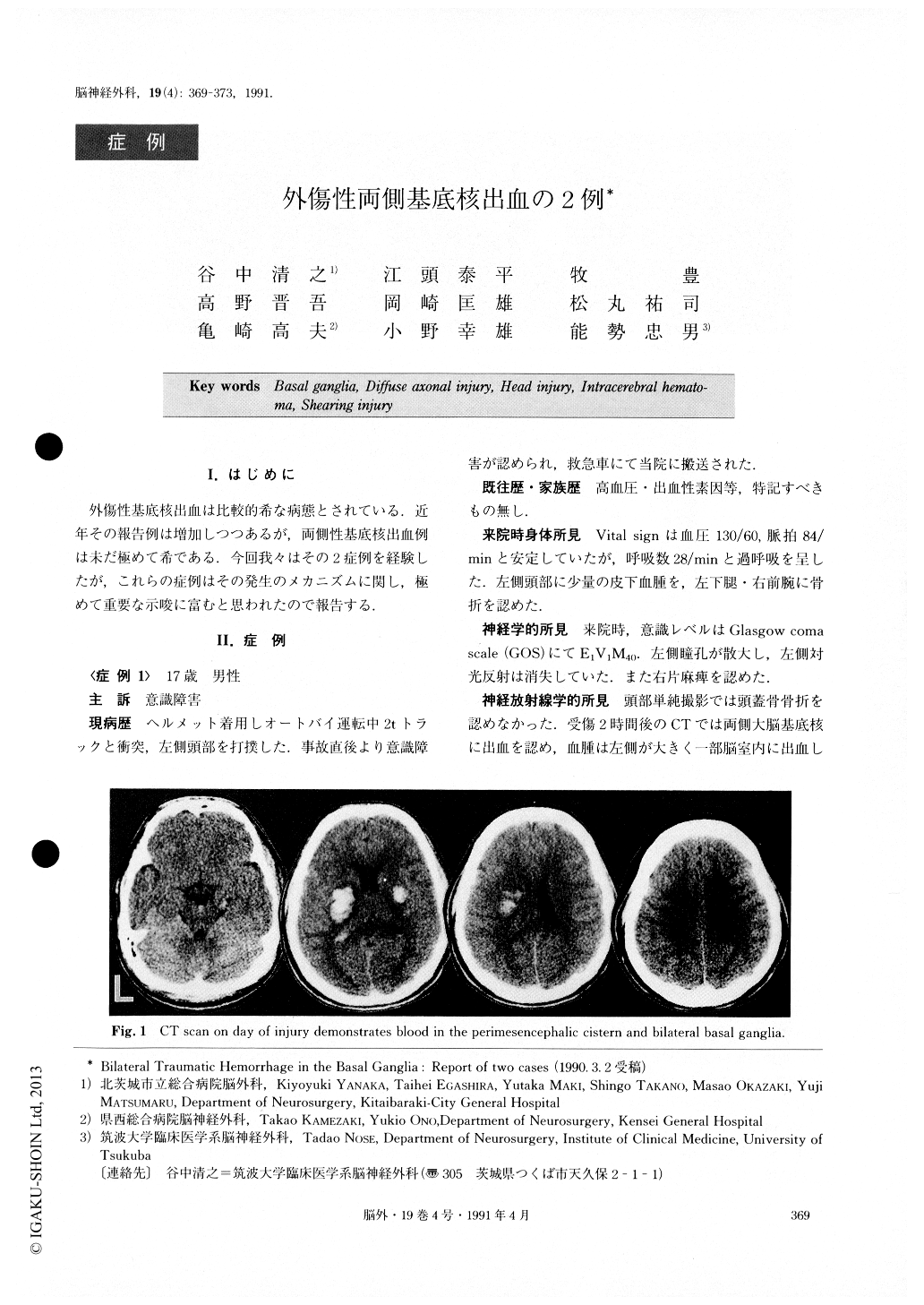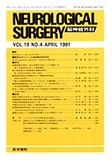Japanese
English
- 有料閲覧
- Abstract 文献概要
- 1ページ目 Look Inside
I.はじめに
外傷性基底核出血は比較的希な病態とされている.近年その報告例は増加しつつあるが,両側性基底核出血例は未だ極めて希である.今回我々はその2症例を経験したが,これらの症例はその発生のメカニズムに関し,極めて重要な示唆に富むと思われたので報告する.
Abstract
Hematomas of the basal ganglia in head injury have long been recognized by pathologists with an interst in head injury but their mechanism has not been revealed clearly. We report two cases of bilateral traumatic he-morrhage in the basal ganglia.
Case ♯ 1, a 17-year-old male was admitted to our hospital immediately after a traffic accident. Neurologi-cal examination revealed that the patient was comatose and had right hemiparesis. CT scan showed bilateral hemorrhage of the basal ganglia and subarachnoid he-morrhage in the perimesencephalic cistern. MRI showed high signal intensity areas in the bilateral basal ganglia, perimesencephalic cistern, cerebral white mat-ter and corpus callosum. The patient was diagnosed as having diffuse axonal injury coinciding with bilateral hemorrhage of the basal ganglia. Stereotactic aspiration for the hematoma of the left basal ganglia was carried out.
Case ♯ 2, a 75-year-old male was admitted immedi-ately after falling from the roof of his house. Neurolo-gical examination revealed no neurological deficit ex-cept for headache and nausea. CT scan on the day of injury revealed no abnormality. But CT scan 12 hours following the injury showed bilateral hemorrhage of the basal ganglia. Blood pressure of the patient was within, normal range and he was diagnosed as having traumatic bilateral intracerebral hematoma. Conserva-tive treatment was carried out and the patient was dis-charged 7 days after injury with no neurological deficit. The mechanism of traumatic hemorrhage of the basal ganglia has not been clear. In case # 1, diffuse axonal injury (DAI) may have played an important role in the bilateral hemorrhage. But in case # 2, non-DAI factor such as vasoparalysis syndrome may have existed. The mechanism of bilateral traumatic hemorrhage of the basal ganglia is complicated. Therefore these caess must be classified as either DAI or non-DAI.

Copyright © 1991, Igaku-Shoin Ltd. All rights reserved.


